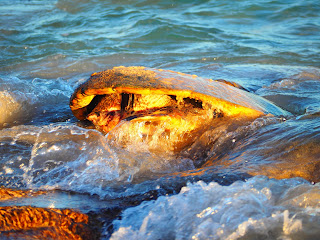 |
| Saturday morning at Big Swamp. A beautiful place to run |
 |
| Yes, they have been running for a while |
Love was in the air at this parkrun as a couple got
engaged the day before. In the pre-race chat the happily engaged pair received a
large cheer from the crowd. Did I mention it was the day after Valentine’s day?
 |
| Yeah mate!! and I went on my knees and all |
I was very surprised to find a large South African community
at this parkrun who seemed to have a lot of fun picnicking and taking photos of
each other. Even the children were speaking Afrikaans.
 |
| Evidence of love |
Running along Big Swamp is a thing of beauty. All sorts
of birds and other critters shot away during our run. The trail features a lot of trees, bits of forest and the occasional small bridge thrown in.
A volunteer told me that there were many plans to run the course at the Bunbury Back Beach but there were too many safety concerns with such a course.
A volunteer told me that there were many plans to run the course at the Bunbury Back Beach but there were too many safety concerns with such a course.
 |
| The barefoot Mathematician |
What has parkrun got to do with mathematics and science? Well!!
We met a teacher of this subject who told us that he calculated that wearing
shoes would slow him down. Now he runs every parkrun barefoot.
 |
| Smart business move |
We saw proof that the business community have woken up to
the parkrun phenomena when a coffee van rocked up for some hefty early morning
trade. A nice way to spend your Saturday morning anyway.
 |
| Anything for a caffeine hit |
The Big Swamp course has a two and a bit loop and I was warned by
the locals of a large looming hill in the course. Half way through the first
loop I was wondering where it was? Having passed the finish line and immediately
into the second loop I found it. Yep, a pesky little rise taking the rhythm out of
the run. The third time I went up the slight incline it had become a serious oxygen
killing mountain and just about blew me off the track. Watch out for that hill I say.
 |
| I am waiting for the boss to finish his walk |
Parkrun is and remains a family activity. This also counts
in Bunbury where I found people of all ages participating in the event. Many
prams with or without children in them frequented the course. Many well-behaved
dogs waiting for their owners at the finish line or are dragging their owners
around the track. Everyone it seems was busy chatting to someone and that
included us two parkrun nomads.
 |
| A runner at the finish as the race director watches on |
Grey Bits
 |
| The feet of marginally increased velocity |
Thanks to parkrun community Bunbury for making us feel welcome
 |
| Take stock of another fiftieth run |
 |
| The all important tail, in this case, walker. Well done! |



































